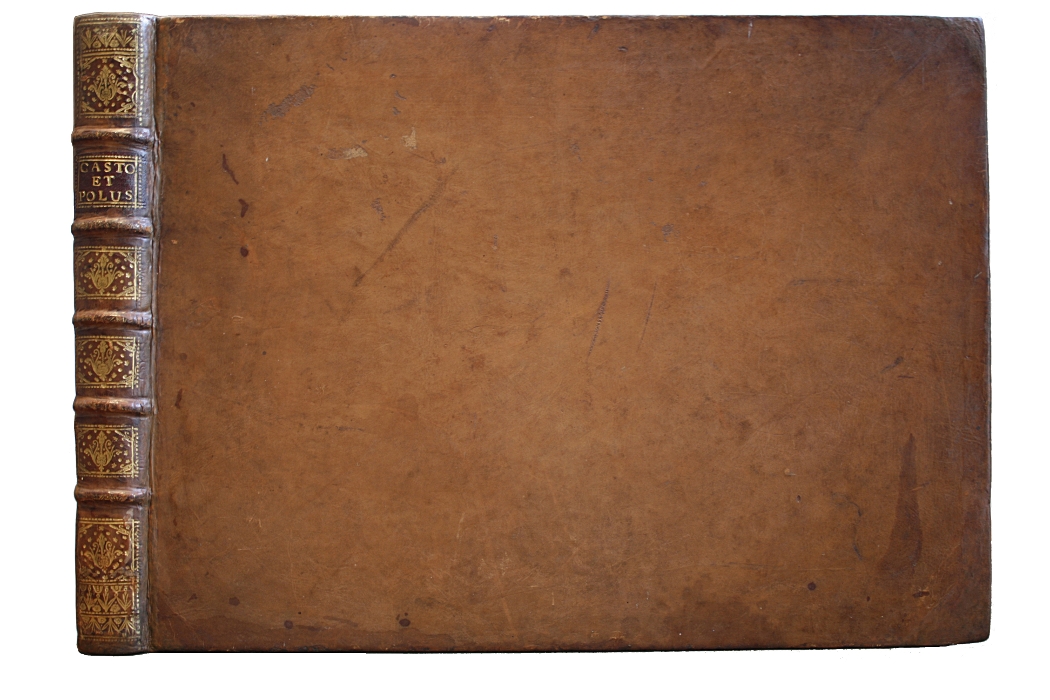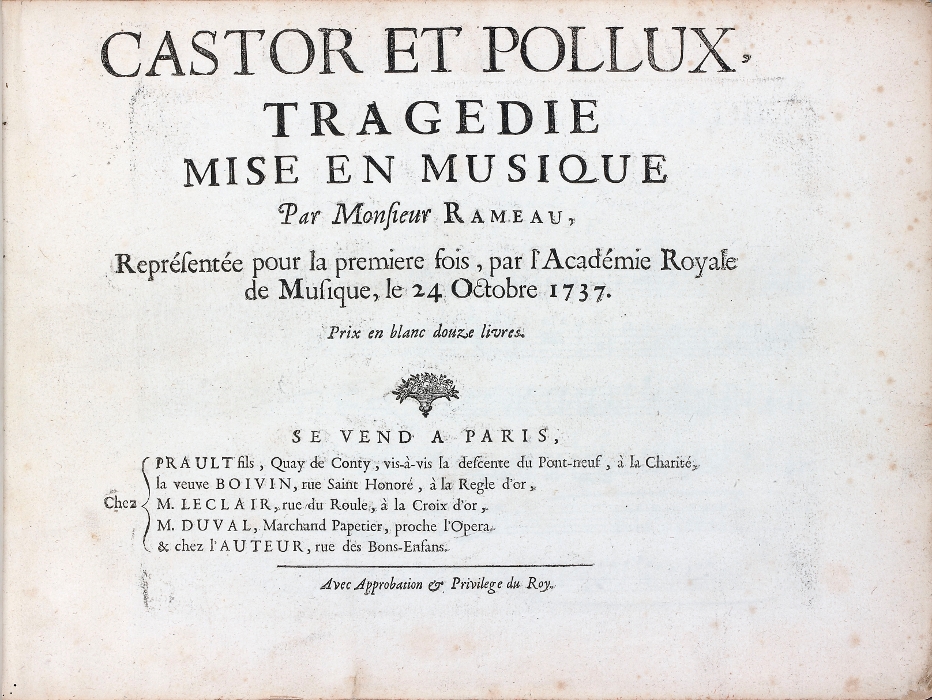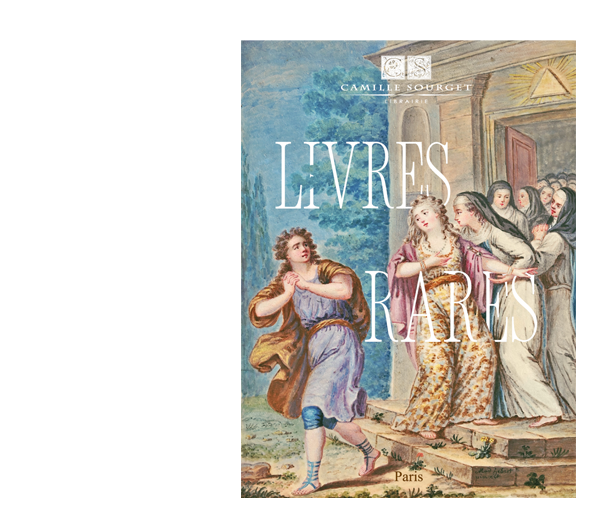RAMEAU, Jean-Philippe. Castor et Pollux, tragédie mise en musique. Paris, Prault, Boivin, Leclair, duval et chez l’Auteur, n.d. [1737].
Oblong 4to [320 x 240 mm] composed of 1 title and 193 pages of engraved musical score, with libretto incorporated. Bound in light-brown calf, spine ribbed and decorated. Contemporary binding.
Rare first edition of Jean-Philippe Rameau’s masterpiece, performed for the first time on October 24th 1737.
« Lyric tragedy in five acts and a prologue, libretto by Pierre-Joseph Bernard, music by Jean-Philippe Rameau (1683-1764), performed on October 24th 1737. After the success of Hippolyte et Aricie and of his second opera: Les Indes galantes, after a mediocre libretto by Fuzelier (1735), Rameau asked P.J. Bernard, for a new subject, and this time was more happy in his choice: the author of the libretto, without being a great poet, was able to offer a rich, charming and well-built libretto. In the adventures of Castor et Pollux, Bernard introduced the love of the two brothers for the same woman, Telaïre, creating this way a sentimental conflict that engendered lyric and dramatic situations. Besides, from a theatrical point of view, this libretto was offering to the musician many varied episodes: a funeral scene, the arrival of the victorious athletes in the first act, the dance of pleasures in the second one, the descent into the Underworld in the third one, the Champs-Elysées and the choir of the blessed people’s shadows in the fourth one, the appearance of Jupiter in the middle of the universe where Castor and Pollux are going to take place, in the fifth act.
From the musical point of view, Castor and Pollux is considered as Rameau’s masterpiece. Among the most beautiful pages, the choir has to be mentioned: « Que tout gémisse » and the air « Tristes apprêts », the danced minuet « Dans ces doux asiles », the scene of the Underworld, the one of the Champs-Elysees in which is developed Castro’s air, supported by a very thin orchestral framework that was also very surprising at that time. The musical density of this opera is equal to the qualities of the style; clarity, simplicity, expression are essential qualities in Rameau’s art, here are elements that mutually show themselves to advantage. Rameau proves himself and excellent harmonist, especially in the accompaniment of recitatives: the declamation, while having both a key and a personal character, is like Lulli’s in his structure; but the support of the vocal line, instead of limiting itself to series of cadences, is composed of a rich and varied music in which clever and frequent modulations allow the song to respect the demands of the text.
Even the chord is considered by Rameau in its expressive function; he uses in a very effective way the discord in order to emphasize a word, an accent. We notice an obvious Italian influence in the form of the airs and in the writing of the vocal part. Rameau alternates French binary type airs and Italian type airs with their « new line ». This clever combination, while allowing the author to create very personal models, gives to the entire work a character of nobility, of expressive height and severity. The seventeen « entertainments » in Castor et Pollux offer to the musician a possibility to create a “symphonic” language in which the creative strength shows itself sometimes with softness, sometimes with strength, with meditation or with effusiveness, but always with spontaneity and balance. Finally, the choirs are for the composer a sober way of expression, but colorful, as living as his vocal and instrumental melodies. In this opera, the composition of the orchestra is in accordance with the one of that period; stringed instruments, flutes, oboes, bassoons, trumpets and timpani. In his orchestration, Rameau appears more concerned than his predecessors to obtain the independence of the timbers; he applies himself with special care to seek the sonority of chords, according to the timbers used for each note. If we take into account that at the time, the characteristics and the nuances of the timbers were considered as mere accessories, this intuition of the future developments of orchestration has some importance.
This opera remained in the repertoires of performances for 47 years; towards 1770, grimm wrote: ‘Castor et Pollux’, here is the pillar on which rests the glory of French music.’ ». (Dictionnaire des Œuvres, I, 581-582).
A precious copy of this rare opera preserved in its contemporary light-brown calf binding.
Among the French Institutions, only the Bibliothèque d’Amiens seems to own this first edition.



